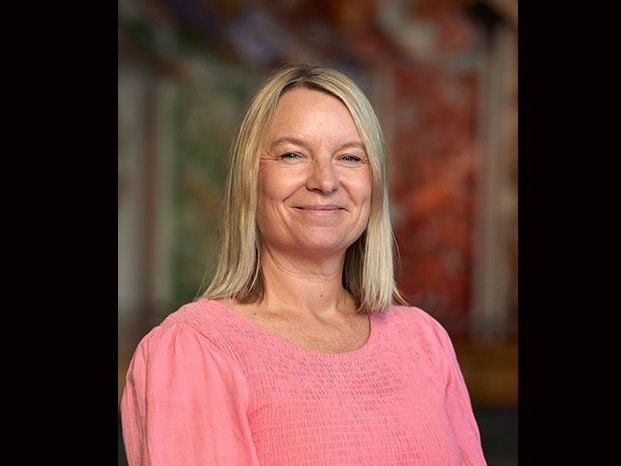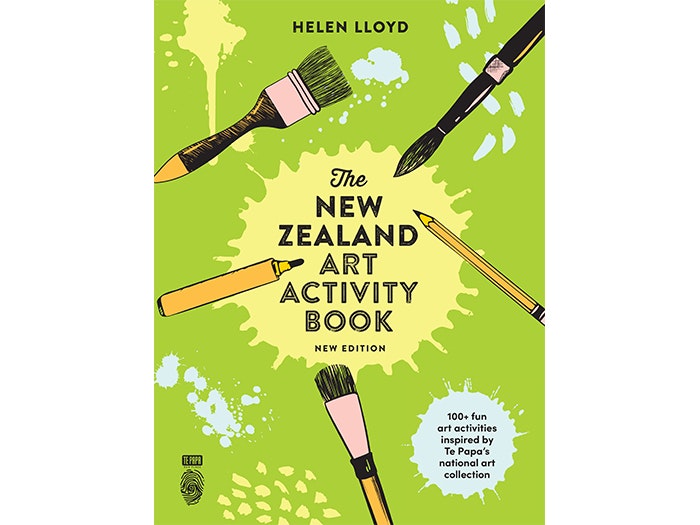
Q&A with Helen Lloyd, author of The New Zealand Art Activity Book
Helen Lloyd discusses the new edition of The New Zealand Art Activity Book with Te Papa Press.
Helen Lloyd is a Gallery Educator at City Gallery Wellington. She is a qualified art teacher with a visual art and art history degree and a Master’s in museum and gallery education. Helen has 20 years’ experience of teaching art to children of all ages in schools, museums and galleries in the United Kingdom, Russia and New Zealand, including Te Papa, where she held the position of Senior Education Programmer. She also authored the first New Zealand Art Activity Book and has written and developed the new edition in consultation with Sarah Farrar, Senior Curator Art at Te Papa.
"...children can explore both historic and contemporary art, art made with a variety of different materials and techniques and art made by Māori, Pākehā, Pacific and New Zealand Asian artists." – Helen Lloyd
Now that the Art Activity Book is published, what are you most pleased about?
I’m particularly pleased to have included Māori and Pacific languages throughout this edition. As with the English text, I’ve used words children should already be familiar with and added a few they may not have learnt yet. So not only is this book a fantastic way for children to learn about New Zealand artists and explore different ways to create art, but it helps to expand their language skills too.
How does it differ from the previous and very successful edition?
I have retained a few pages from the last edition, but most of this book is new. This edition includes many more artworks from Te Papa’s collection for children to learn about and enjoy. I have designed all the new creative activities so that children can experiment with similar ideas or techniques as the featured artworks. The page-works and art activities generously gifted by artists to the previous edition have been retained and we have invited new artists to contribute. Their responses are so varied and exciting, they make this edition really unique and special.
What are its key strengths?
In this edition children will be able to learn about a wide range of art techniques and art styles by reading the simple explanations I’ve included throughout the book. By answering the questions I’ve posed about each of the artworks, children will be encouraged to look really closely, develop their visual literacy skills and think about what art means. And in this edition, children will be able to experiment with a much wider range of techniques for creating art through the hands-on activities I’ve designed.
You worked at Te Papa for some years. Was revisiting the collection to see what might work for the book a bit like reacquainting yourself with old friends?
Yes revisiting the collection to choose artworks for this book was a great delight. Working closely with Te Papa’s senior art curator, Sarah Farrar, on the selection was immensely helpful. I’m pleased with the variety of art works we’ve chosen to feature. By using this book, children will become familiar with many of New Zealand’s most famous artists and also see some that are lesser known. In this edition children can explore both historic and contemporary art, art made with a variety of different materials and techniques and art made by Māori, Pākehā, Pacific and New Zealand Asian artists.
What’s one new thing you learnt while working on it?
Finding out where artists were born, where they studied, live or work has been very interesting. I felt particularly excited each time I came across an artist from my region, as I felt a special connection with them. I hope children reading this book will feel similarly excited to learn that a famous artist may be from their home town or may have lived nearby or could still be working in their region.
What is the latest thinking about how important hands-on art activities are to the development of a child’s creativity?
All teachers understand that hands-on art activities play a central role in children’s learning and development. But I’m aware that time for art in the classroom can sometimes feel squeezed by core subjects like literacy and numeracy and primary teachers often have limited training about how to teach art. Therefore books like this are a valuable resource that can be used at home or in school to develop children’s creativity and I’ve been told by several teachers that they have used activities from the first edition in their art lessons.
Theories about self-directed learning are increasingly informing teaching practices and this book is designed for children to be able to direct their own learning. By removing any sense of chronology and offering alternatives within many of the activity prompts, children are encouraged to explore the book by dipping in and out of the pages in whatever order they want and to choose how they wish to respond creatively.
Do you worry that these are being supplanted by screen time?
Digital technologies do offer new ways to design and build things but children also need time for hands-on exploration of materials and exposure to a variety of visual and tactile experiences.
You have a busy job and children of your own. How do you find the time to work on the book?
Being a mum of two on top of my job at City Gallery does mean that I’m usually very busy, but I’m lucky to have a small, sunny room at home where I can write away from the hubbub of family life. During my weekly routine there aren’t many spare moments so the majority of the book has been written during school holidays or weekends.
What’s the best time of day for you for writing?
I think most clearly in the mornings, although ideas will often appear out of nowhere in the middle of the night!
What are you reading at the moment?
My husband bought a delicious visual anthology of ceramics for my birthday, The Pot Book by Edmund De Waal, which I am enjoying using for inspiration as I’ve recently joined a pottery studio to learn how to throw vessels on the wheel.
I’m also re-reading a book I studied over 15 years ago, The Social Production of Art by Janet Wolff. I was prompted to pick it up again when it came up in conversation with the Masters student I’m currently supervising and it’s reminding me of the complex social structures that influence the way we all relate to art.
You might also like


The New Zealand Art Activity Book (New Edition)
100+ art activities based on the collection of Te Papa, New Zealand’s national museum and gallery